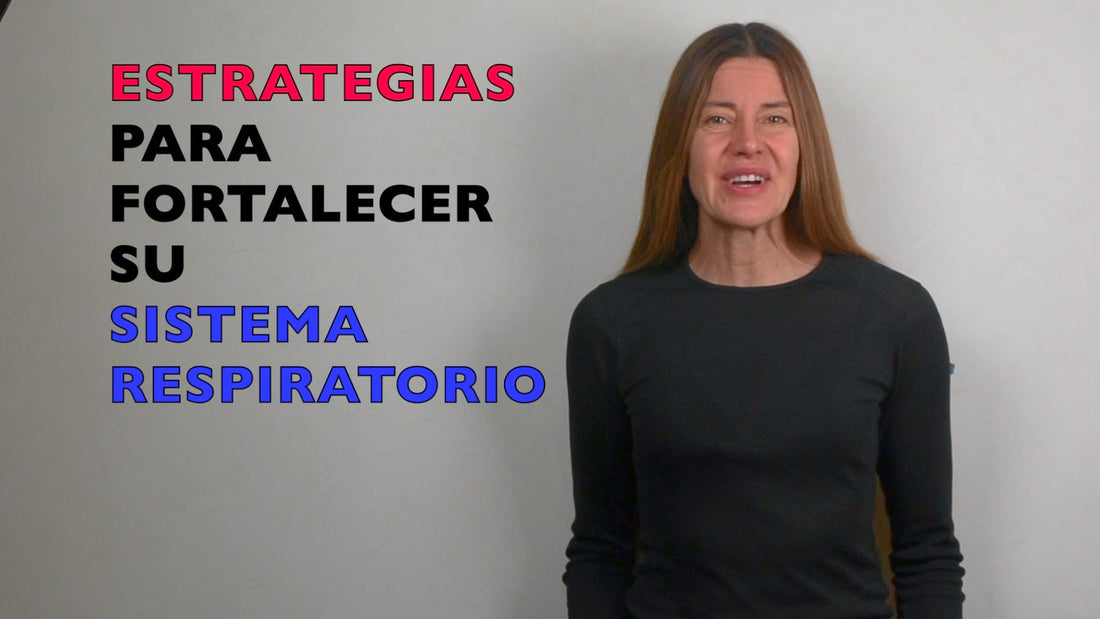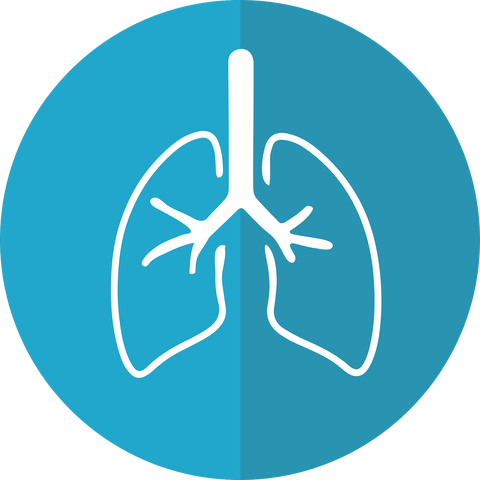
Healthy breathing during the cold season
Share
With the abrupt changes in weather from indoors to outdoors during the winter and rainy season, it is important to be strong, especially on the eve of end-of-year events and celebrations.
In these circumstances, the most vulnerable part of the body is the lungs, so today, I would like to share with you some tips to put into practice in order to strengthen your respiratory system and at the same time help strengthen your immune system and your body in general.
Learn the habits that will allow you to keep your lungs resistant and in any climate
The lungs, heart, joints and other parts of the body deteriorate as time passes. The lungs, on the other hand, lose their flexibility and strength, which makes it difficult to have an efficient respiratory cycle. The following practices, when performed regularly, will allow you to maintain the health of your respiratory system, making it work effectively in times of vulnerability such as cold and humid seasons, during flu and colds, as well as in old age.

1. Do not smoke or quit smoking .
You probably already know that smoking increases your risk of lung cancer. But it's not the only disease that smoking can cause. Smoking is linked to most lung diseases such as idiopathic pulmonary fibrosis, asthma, and COPD (chronic obstructive pulmonary disease). It also makes the above diseases more severe.
Every time you smoke a cigarette, you inhale a multitude of chemicals such as nicotine, carbon monoxide, tar, and the fungus Aspergillus niger , which go directly to your lungs.
These toxins DAMAGE the lungs by increasing the formation of phlegm or mucus, making it difficult for this organ to clean itself. The respiratory system is one of the body's important pathways for cleansing itself, and these toxins cause irritation and inflammation of the tissues. Eventually, the airways become smaller, making breathing difficult.
No matter your age or how long you've smoked, quitting TODAY helps immediately. The ALA (American Lung Association) says that within just 12 hours of quitting, your blood carbon level drops to normal levels. Within a few months, your lung function begins to improve. Within a year, your risk of heart disease is cut in half compared to that of a smoker. And it only gets better the longer you quit.
Quitting smoking sometimes takes several attempts. It's not easy, but it's worth it.

2. Your environment
Even if you are conscious of avoiding lung contamination from cigarette and other people's smoke, there are more ways your lungs can become contaminated.
Exposure to air pollutants damages the lungs and accelerates aging.
Likewise, pollution levels in large cities are very high and inside office buildings, shopping centers and certain workplaces such as construction sites, mining or waste management, these can be of the same toxic caliber as a pollutant.
Some tips to avoid pollution in closed spaces:
- Make your home a smoke-free zone.
- Dust furniture and vacuum at least once a week.
- Open windows frequently to increase indoor ventilation.
- Avoid synthetic car fragrances and scented candles that can expose you to more chemicals like formaldehyde and benzene. Instead, use essential oil diffusers that work very well and are good for your health.
- Keep your home as clean as possible. Dust, mold, and cat hair can be inhaled and cause lung irritation.
- Use natural cleaning products.
- Make sure you have proper ventilation methods throughout the house.
- For environments in need of purer air, I recommend the Nikken air purifier here

3. Exercise
Exercising regularly is perhaps the single most significant activity for improving your lung health. Just as exercise keeps your body fit, so does your lungs.
When you do aerobic exercise such as brisk walking, jogging, cycling or swimming, you are increasing your cardiopulmonary capacity, that is, your heart beats faster and your lungs need to take in more air, exhaling it forcefully and rhythmically. Here the function of the lungs is essential since they take in a good amount of oxygen for the body and expel more CO2.
Achieving healthy and strong lungs through exercise allows you to better cope with deterioration due to aging and possible diseases.
Specific exercises for the lungs (apart from sports).
Experts at Rush University Medical Center in Chicago, United States, point out that routine breathing is not enough to allow oxygen to flow throughout the body at maximum levels.
Specific exercises to increase lung capacity:
1. Diaphragmatic breathing . These techniques can be used by people who experience lung problems related to asthma, emphysema and chronic bronchitis, as well as by healthy individuals.
Occasionally you may sit upright and try to reach your head higher to allow more room for your lungs.
A simple technique to give your lungs even more room is to recline slightly in a straight chair, lift your chest and open the front of your body as you breathe deeply.
4. Stay hydrated. Drinking enough water is as important for your lungs as it is for the rest of your body.
Staying well hydrated by drinking fluids throughout the day helps keep the mucous lining of the lungs thin. The thinner the mucous lining, the better the lungs can function.
5. Laughter. Laughter is a great exercise to strengthen your abdominal muscles and increase lung capacity. It helps to decongest your lungs by forcing out stagnant air and allowing fresh air to enter more areas of your lungs.

4. Respiratory detoxification
In principle, the lungs are self-cleaning organs that heal themselves once they are no longer exposed to pollutants, such as when a person stops smoking.
After exposure to pollution such as cigarette smoke, the lungs become congested and the chest feels swollen, tight and heavy. Phlegm builds up in the lungs to trap microbes and pathogens, which is why the chest feels heavy.
Some of the following techniques can help clear the airways and lungs of mucus and irritation to make way for a feeling of relief and other undesirable symptoms.
- Vaporizations
In a small study of 16 people with chronic obstructive pulmonary disease (COPD), steam therapy helped relieve symptoms of airway congestion and discomfort without being a definitive medicine.
The old way of doing vaporizations was to heat a pot of water with eucalyptus leaves on the stove. When it reaches boiling point, the temperature is lowered a little and the person comes closer to breathe the steam with their head covered with a towel that allows the steam to stay close to the face and chest.
2. Controlled cough
Coughing is the body's natural way of expelling toxins trapped in phlegm. Controlled coughing loosens excess phlegm from the lungs and sends it up through the airways.
Steps:
- Sit in a chair with your shoulders relaxed and the soles of your feet completely flat on the floor.
- Cross your arms over your stomach
- Gently inhale air through your nose
- Slowly exhale it while leaning forward, pushing your arms against your stomach
- Cough 2-3 times while exhaling, keeping your mouth slightly open
- Slowly inhale through your nose
- Rest and repeat as many times as necessary.
- Percussion on the chest
This is another effective way to remove excess phlegm from the lungs. A pulmonary therapist would use cupped hands to gently tap the chest wall (the back is also used) to loosen phlegm that is stuck in the lungs.

5. Food
The most beneficial foods known for lung health are found within the group of flavonoids.
A group of polyphenols, phytonutrients found in most fruits and vegetables. There are many flavonoids, but they are best known for their antioxidant and anti-inflammatory effects.
Anthocyanins, specifically, are those found in plants whose pigments give a red-blue hue to their fruits, such as berries and other foods.
Diet also plays a role. Processed foods in general, and processed meats in particular, have previously been linked to rapid decline in lung function.
In a study conducted by the School of Nutrition at Johns Hopkins University, it was concluded that the general population can benefit from flavonoid-rich fruits such as berries, especially people who have stopped smoking or have never smoked. However, for smokers, abstinence remains the best thing they can do to improve their health. ( study )
To naturally increase your flavonoid intake in your diet, try eating more of the following foods:
|
Flavonols : onions, apples, kale, broccoli, chickpeas, almonds, sweet potatoes and quinoa. |
|
Flavan-3-ols : apples, tea (black, green, white), blueberries, peaches, pears, strawberries, and cocoa. |
|
Flavones : parsley, bell peppers, celery, apples, oranges, watermelon, chili, melon and thyme. |
|
Flavonones : oranges, grapefruits, lemons and tomatoes. |
|
Anthocyanins : strawberries, cherries, red cabbage, cranberries, plums, raspberries, blueberries, black grapes, purple potatoes. |
|
Quercetin : garlic, apples, plums, red grapes, citrus fruits, black cherries and red fruits such as blueberries, blackberries, capers, olive oil. Small amounts are found in parsley, sage, elderberry. |
|
Apigenina : celery, parsley, thyme, basil, oregano, coriander, chamomile, broccoli, leeks. |
|
Epicatechin : cocoa, dark chocolate, apples, black grapes, blackberries, black tea, cherries. |
Foods to avoid
If you want healthy lungs, you should avoid fried and processed foods, as well as harmful fats such as those found in processed meats or oils. Any food that promotes inflammation must be harmful to the lungs.
For good lung health, it is therefore recommended to avoid foods containing trans fats, such as margarine and bacon, as well as to keep sodium levels in the body low in order to prevent edema (fluid retention) that can lead to an increase in blood pressure. ( article )

6. Prevention
Why are there people who never get sick? What is their secret? Perhaps the answer lies in one or more of these tips:
- Wash your hands regularly, especially after being in a public place.
- Avoid touching your face to prevent germs from entering your body.
- Eat a diet rich in vitamins and minerals
- Try to sleep at least seven (7) hours at night
- Exercise routinely
- Meditate, pray or at least find a few minutes to reflect each day in order to reduce stress levels.
